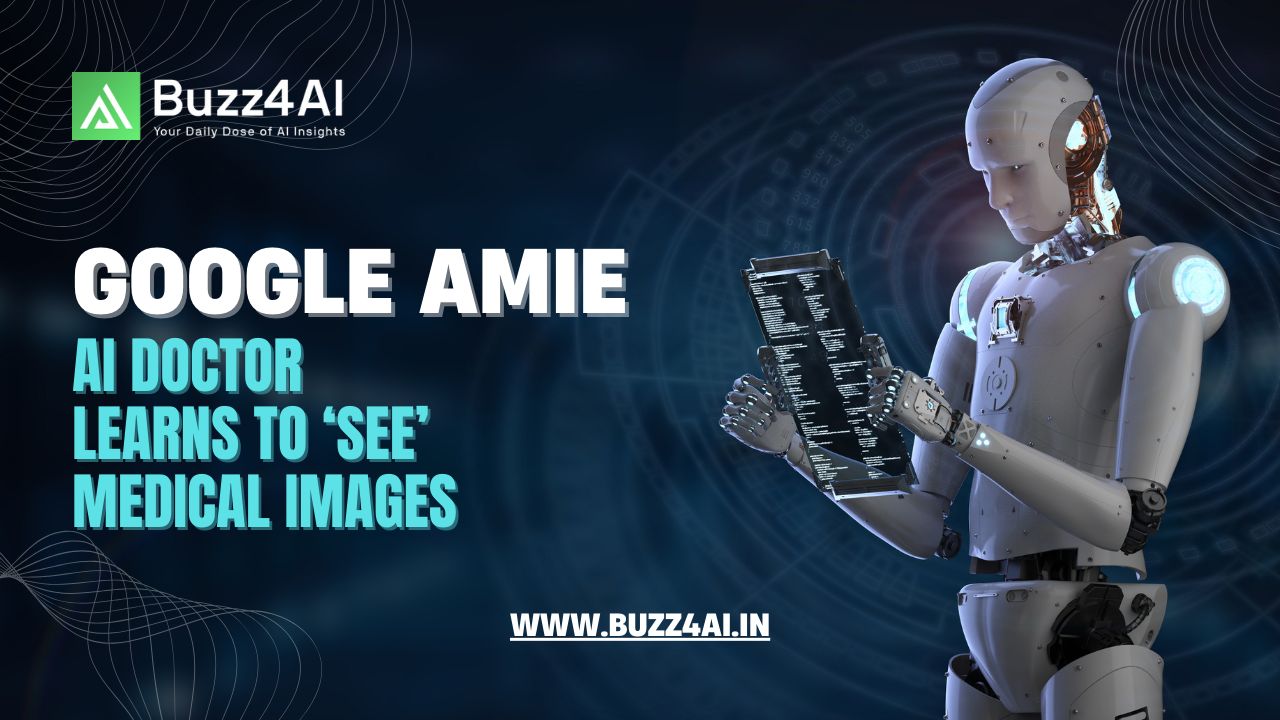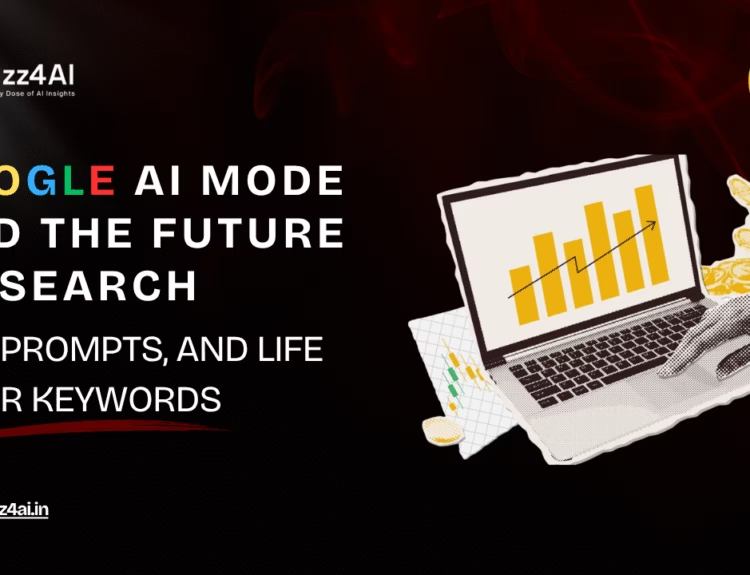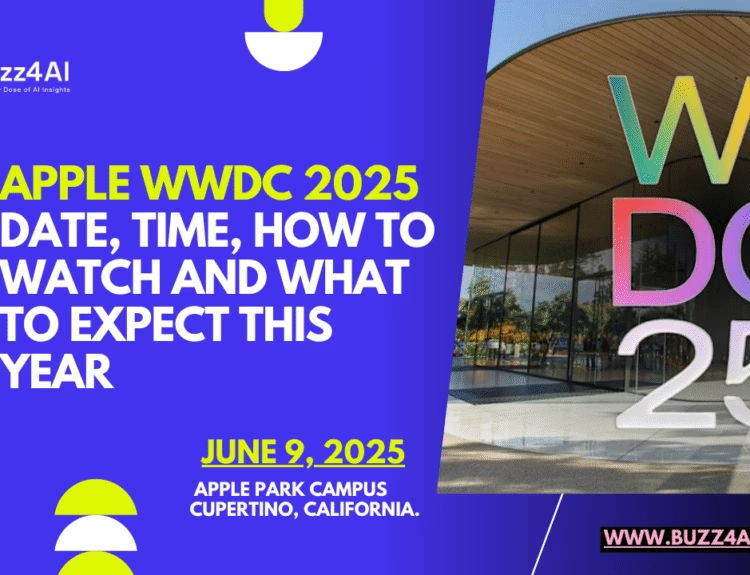Google AMIE AI, In a groundbreaking step for medical artificial intelligence, Google has upgraded its conversational AI agent, AMIE (Articulate Medical Intelligence Explorer), with the ability to interpret and reason over medical images. This latest development pushes the boundaries of what AI can do in diagnostic healthcare settings and opens new doors in the integration of multimodal data—a challenge that has long limited AI’s potential in real-world clinical practice.
AMIE was recently published in the journal Nature, where it gained attention for its ability to hold medically relevant diagnostic conversations. Now, Google is going further by enabling AMIE to “see” and analyze visual data, an essential feature for any system aiming to replicate or assist the work of a real doctor.

Doctors rely heavily on what they can see – skin conditions, readings from machines, lab reports. As the Google team rightly points out, even simple instant messaging platforms “allow static multimodal information (e.g., images and documents) to enrich discussions.”
Text-only AI was missing a huge piece of the puzzle. The big question, as the researchers put it, was “Whether LLMs can conduct diagnostic clinical conversations that incorporate this more complex type of information.”
Google Teaches AMIE to Look and Reason
AIME is a language model–based AI systems like AMIE have excelled in processing and generating human-like conversations using text. However, medicine is not purely verbal—clinicians rely heavily on images (like X-rays, CT scans, and MRIs), charts, and documents to make decisions. Recognizing this gap, Google teaches AMIE to look and reason over such data, essentially combining visual and linguistic processing to simulate how doctors interact with diagnostic material.
Google’s engineers have beefed up AMIE using their Gemini 2.0 Flash model as the brains of the operation. They’ve combined this with what they call a “state-aware reasoning framework.” In plain English, this means the AI doesn’t just follow a script; it adapts its conversation based on what it’s learned so far and what it still needs to figure out.
This multimodal capability enables AMIE to engage in richer, more informed medical conversations. For instance, when a patient shares a scan, AMIE can now interpret the image, combine that understanding with verbal symptoms, and suggest next steps—just like a human physician might during a consultation.
Google created lifelike patient cases, pulling realistic medical images and data from sources like the PTB-XL ECG database and the SCIN dermatology image set, adding plausible backstories using Gemini. Then, they let AMIE ‘chat’ with simulated patients within this setup and automatically check how well it performed on things like diagnostic accuracy and avoiding errors.
multimodal AMIE: diagnostic conversational AI that can intelligently request, interpret and reason about visual medical information during a clinical diagnostic conversation. Integrate multimodal perception and reasoning into AMIE through the combination of natively multimodal Gemini models and state-aware reasoning framework.
The Virtual OSCE: Google Puts AMIE Through Its Paces
To test AMIE’s new visual reasoning skills, Google subjected the AI to a virtual OSCE (Objective Structured Clinical Examination)—a standardized simulation used to assess real medical students and professionals. In this setup, AMIE interacted with virtual patients in scenarios that required both conversation and image analysis.
Google ran a remote study involving 105 different medical scenarios. Real actors, trained to portray patients consistently, interacted either with the new multimodal AMIE or with actual human primary care physicians (PCPs). These chats happened through an interface where the ‘patient’ could upload images, just like you might in a modern messaging app.
Afterwards, specialist doctors (in dermatology, cardiology, and internal medicine) and the patient actors themselves reviewed the conversations.
The virtual OSCE helped validate AMIE’s multimodal intelligence, proving that this AI doctor can go beyond scripted answers and actually engage in thoughtful, evidence-based diagnosis.
Surprising Results from the Simulated Clinic
Here’s where it gets really interesting. In this head-to-head comparison within the controlled study environment, Google found AMIE didn’t just hold its own—it often came out ahead., Google’s team ran simulated clinic sessions to observe how AMIE performs in more natural, patient-like environments. These scenarios involved dynamic patient conversations, unexpected medical histories, and varied diagnostic materials like lab reports and scans.
The surprising results from the simulated clinic showed that AMIE was not just accurate—it was empathetic, context-aware, and able to adjust its responses based on the evolving nature of the conversation. In many cases, it even suggested follow-up questions and additional tests, mirroring real-world diagnostic reasoning.
Important Reality Checks
Google is commendably upfront about the limitations here. “This study explores a research-only system in an OSCE-style evaluation using patient actors, which substantially under-represents the complexity… of real-world care,” they state clearly.
Simulated scenarios, however well-designed, aren’t the same as dealing with the unique complexities of real patients in a busy clinic. They also stress that the chat interface doesn’t capture the richness of a real video or in-person consultation.
Moreover, AMIE’s current performance is based on controlled and simulated environments. In the unpredictable, high-stakes world of real clinical practice, further validation, peer review, and integration protocols will be essential.
Still, Google’s push to evolve AMIE into a multimodal, conversational AI doctor is a major milestone in the journey toward AI-augmented healthcare.
Final Thoughts
With AMIE’s newfound ability to “see” and reason over medical images, Google has made a giant leap toward creating AI systems that can truly collaborate with clinicians in meaningful ways. By combining text, images, and reasoning, AMIE blurs the lines between a diagnostic assistant and a digital doctor.
Google continues to refine and test AMIE, the future of intelligent, image-aware AI doctors no longer seems like science fiction—it’s becoming a near-term reality.
For more posts related t0 AI News and tools visit buzz4ai.in







[…] Google AMIE AI doctor learns to ‘see’ medical images […]